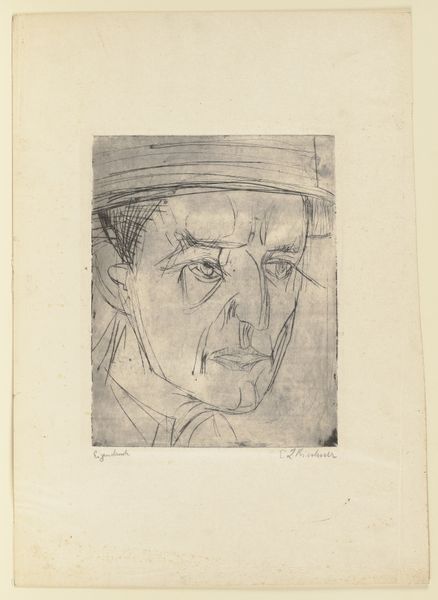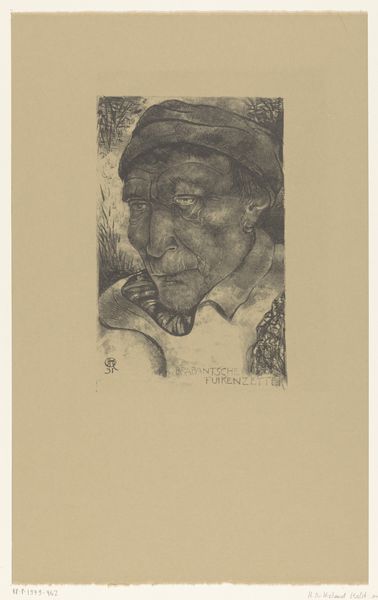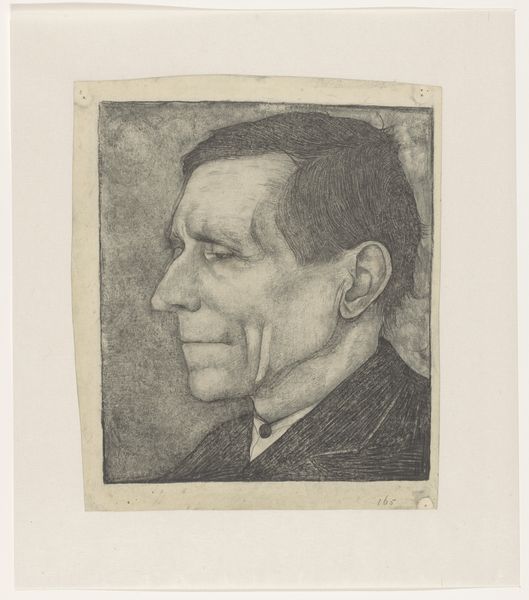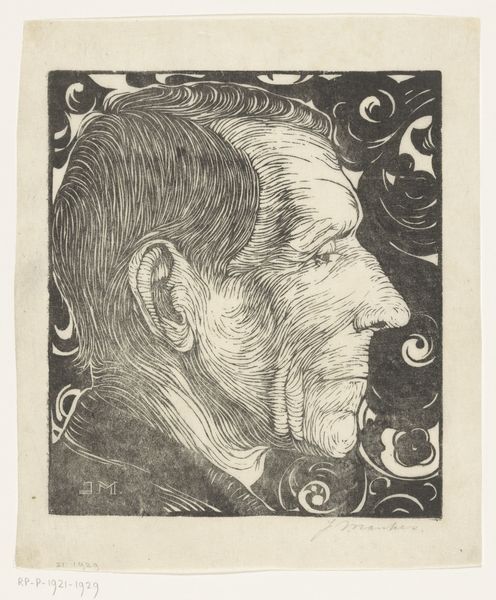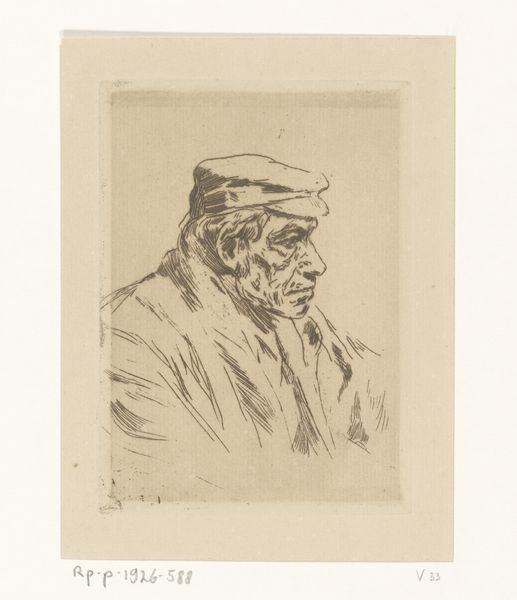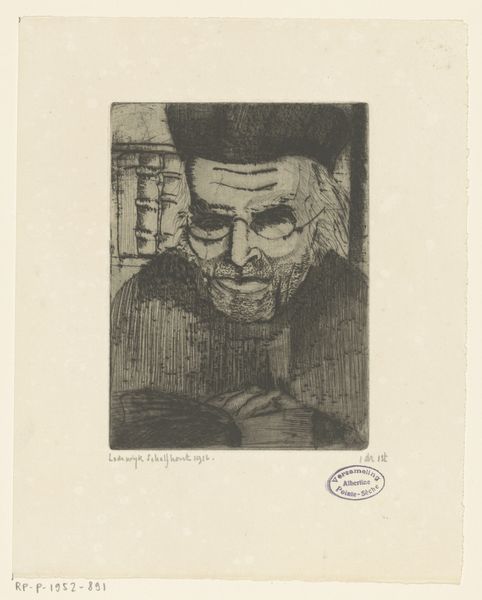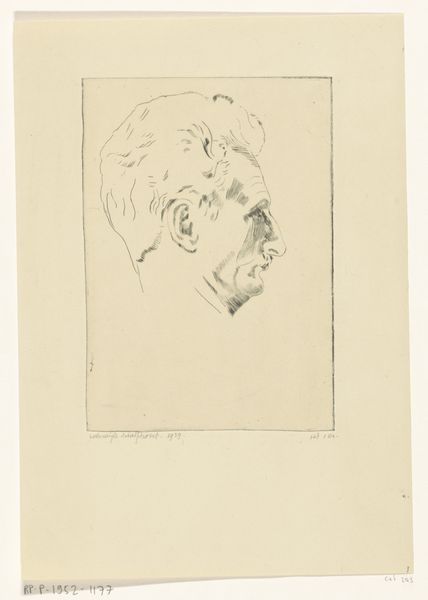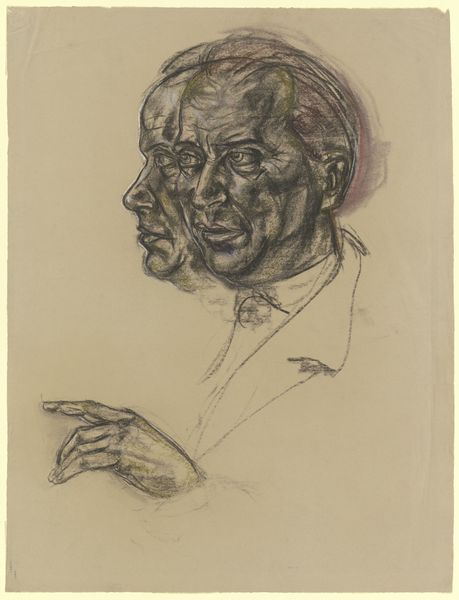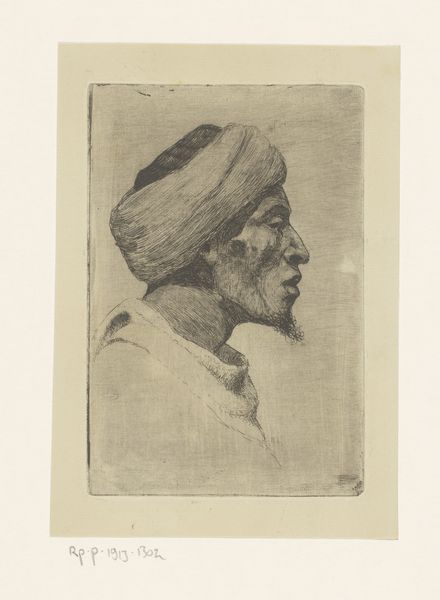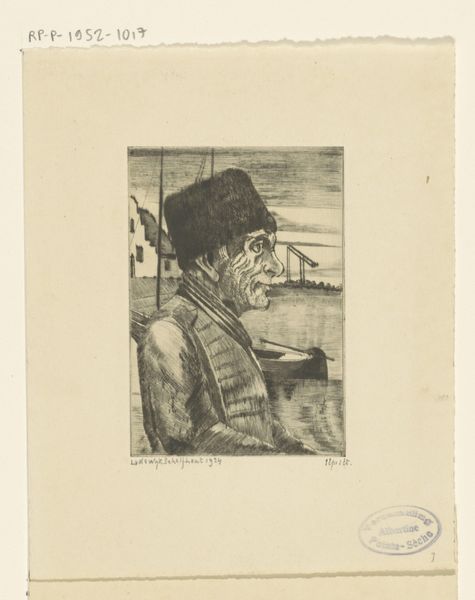
drawing, pencil
#
portrait
#
drawing
#
self-portrait
#
pencil drawing
#
pencil
#
portrait drawing
#
northern-renaissance
#
realism
Dimensions: height 272 mm, width 253 mm
Copyright: Rijks Museum: Open Domain
Curator: Ah, "Portret van Douwe met muts," created by Jan Mankes around 1914-1915. It’s a drawing rendered in pencil. Editor: Immediately, I'm struck by the intensity, the vulnerability. It feels stark, almost like a direct confrontation with mortality. The severe profile against that dark background creates such a powerful silhouette. Curator: Mankes was really interested in capturing inner life. The man's age is etched so vividly; the wrinkles, the set of his jaw. It evokes a sense of resilience mixed with weariness, don’t you think? Editor: Absolutely. The artist manages to convey this through such minute details, so subtle in a pencil drawing, right? It is not just about recording his physical presence. I mean, it is clearly representational, almost northern-renaissance-like. What can you tell me about his socio-political standing? Curator: We, unfortunately, do not know much about him, so he stays kind of the ghost inside the portrait. Jan Mankes really had that talent of creating mood using a rather simplistic technic. This gives, as you mention, a universal aspect. What do you find interesting from a socio-political aspect when seeing that portrait? Editor: It resonates within a longer art-historical discourse about marginalized identities and challenges traditional portraiture's emphasis on portraying power. The intimacy suggests a conscious subversion. His direct stare is so subversive for the time... and it makes one wonder what role Mankes himself had to play at the time, don’t you think? Curator: One can read it like this! His work does have a strong underlying emotion. There’s a meditative quality to the piece as a whole, no? The dark space around him suggests inner reflection and is not just emptiness... a symbolic landscape if you prefer. It invites us to reflect on the passage of time. Editor: True, the shadowy backdrop almost suggests that the figure emerges from nothingness, a profound reminder of temporality. In this view, it's more than a portrait; it's a philosophical statement on existence. I see Mankes pushing boundaries there. Curator: Mankes created a contemplative space, allowing the viewer to project their own narratives, too, in relation to those universal emotions. Editor: So ultimately, it stands as both an intimate portrayal of an individual and a broader contemplation on existence—a duality I find quite poignant, really. Thank you for bringing up the details about it. Curator: My pleasure; such are the hidden gems here, awaiting a patient gaze.
Comments
No comments
Be the first to comment and join the conversation on the ultimate creative platform.


